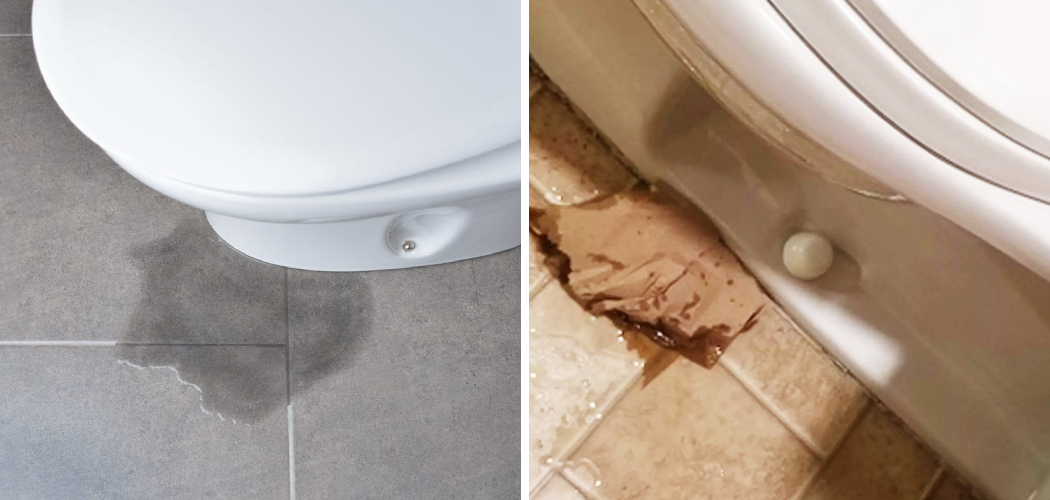Do you have tile around your toilet? Are there signs telling you that it might be leaking underneath the tile, but you don’t know how to tell for sure? Whether you’re trying to cover a nasty leaky toilet or just want to decorate around it, knowing how to tell if the toilet is leaking underneath your tile can be incredibly helpful. If so, then this post is for you!
Tiling around toilets can make your bathroom look more stylish and modern – but when the toilet starts leaking under the tile, it can quickly become a nightmare. It’s important not only for aesthetic purposes but also for pinpointing problems that may need repair before they become a much larger issue down the road.
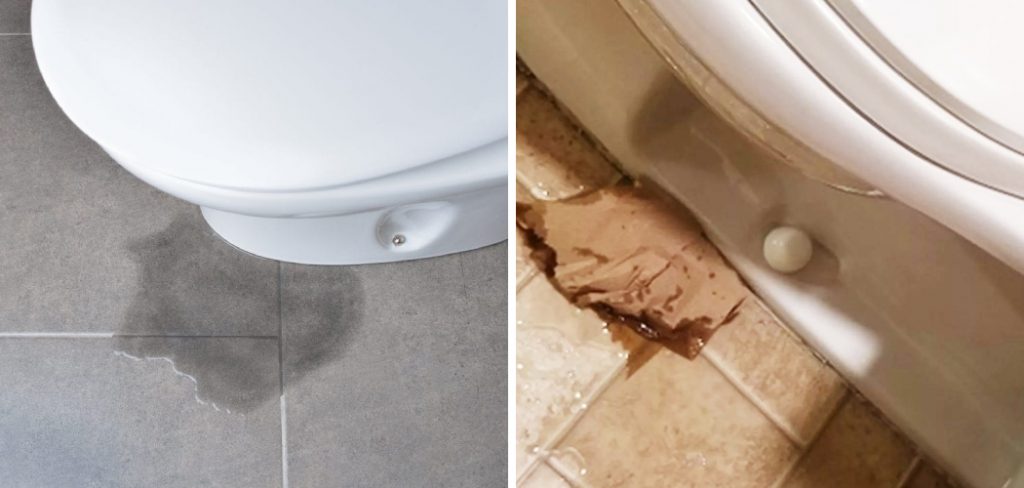
In this blog post, we’re going to cover what to watch out for if there is a possibility of leakage beneath the tile and also talk about preventative measures to keep your toilet (and floor) leak free. Read on to learn more about how to tell if the toilet is leaking under the tile.
What Causes Toilet Leaking Under Tile?
1. Faulty Wax
Before we dive into how to tell if toilet is leaking under tile, it’s important to understand what causes this problem in the first place. The most common cause is a faulty wax seal beneath the toilet. This wax seal helps keep water from seeping out of the base of the toilet and onto your bathroom floor.
Over time, these seals can crack, wear down, or become dislodged due to movement in the floor. If this happens, water will start to leak from beneath the toilet and into your bathroom tile.
2. Loose/ Damaged Parts
Another cause of leaking under the tile is loose or damaged parts on the toilet itself. This could be an issue with the flange, the bolts, or any other part of the toilet that has become loose or damaged. This can cause water to seep under and around the base of the toilet and onto your bathroom floor.
3. Overflowing Toilet Tank
If you notice water coming up from beneath your tile when you flush the toilet, it might be due to the toilet tank overflowing. This can happen if there is a blockage in the drain or if the water level in the tank is too high.
Now that you know what causes leaking under tile, let’s talk about how to tell if your toilet is actually leaking beneath the surface.
Required Items
- Flashlight
- Waterproof gloves
- Buckets
10 Ways How to Tell if Toilet is Leaking Under Tile
1. Inspect the Flooring
The first step in determining whether or not your toilet is leaking under the tile is to inspect the flooring around the base of the toilet. If you notice any signs of staining, dampness, or water damage, then this could be a sign that there is a leak beneath the surface. It is important to inspect all the visible areas around the toilet, as well as any sections of flooring that may be hidden by furniture or rugs.
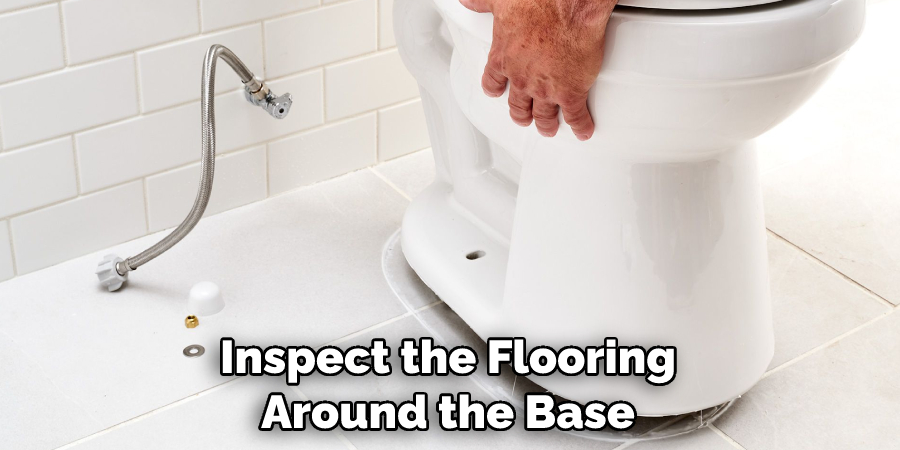
2. Check for Discoloration
Another way to tell if your toilet is leaking under the tile is to look for discoloration on the tiles themselves. If you notice any spots that are darker than the rest of the tiles, this could be a sign that water is seeping through from underneath.
3. Inspect for Cracks in the Tile
If you look closely at your tile, you may be able to spot any signs of cracking or chipping. These cracks can allow water to seep through and cause leaking under the tile. The cracks themselves should also be inspected in order to determine the source of the leak.
4. Look for Standing Water
If you start to notice pools of water around or underneath the toilet, this could be a sign that there is a leak beneath the surface. If you find any standing water, it is important to take action immediately, as this can lead to further damage to the tile and surrounding area.
5. Check for Warping or Bubbling
Another way to tell if there is a leak beneath the tile is to look for any warping or bubbling on the surface. This can be caused by water seeping through from underneath, and it should always be addressed as soon as possible.
6. Listen for Drips or Gurgles
If you listen closely, you may be able to hear any drips or gurgles coming from the toilet, indicating that there is a leak beneath the surface. This sound should be monitored and addressed as soon as possible if it persists.
7. Inspect the Seal
If you can access the seal beneath your toilet, you should take a look at it. If there is any cracking or deterioration this could be a sign that water is seeping through and causing leaking under the tile. Inspecting the seal can also help you determine if it needs to be replaced the seal or repaired.
8. Feel for Moisture
Another way to tell if the toilet is leaking under the tile is to feel around the base of the toilet for any signs of moisture. If you find any dampness, wet spots, or even pools of water, this could be a sign that there is a leak beneath the surface.
9. Check for Mildew or Mold
If you start to notice any signs of mildew or mold around the base of your toilet, this could also be an indication that there is a leak underneath the tile. This should always be addressed as soon as possible so it does not spread any further.
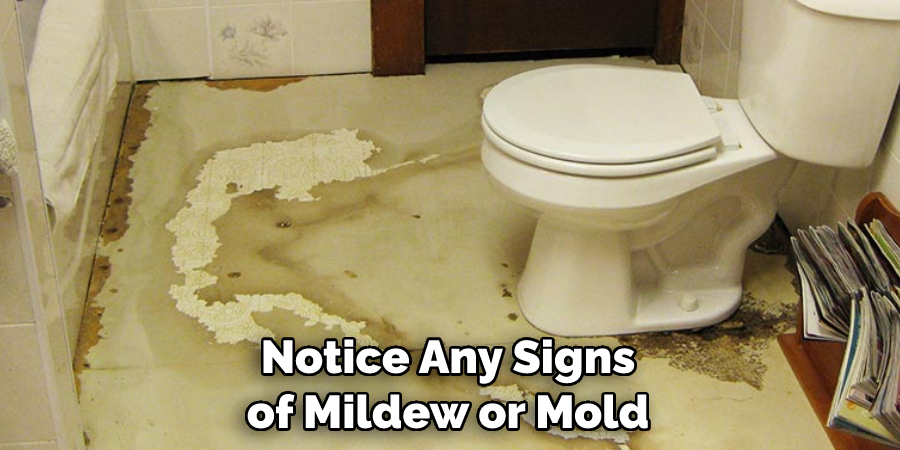
10. Run a Test
If you are still unsure whether or not there is a leak under your tile, then running a test can be a great way to find out for sure. Fill a bucket with water and place it beneath the base of the toilet. If you notice any seepage from underneath the tile, then this is an indication that there may be a leak.
7 Safety Measures to Follow Before Troubleshooting
If you suspect your toilet is leaking under the tile, there are a few safety measures to follow before attempting any troubleshooting.
1. The first thing to do when checking for a leak is to turn off the water supply to the toilet. This is important because it will help avoid any further water damage from occurring. You need to know how to shut off the water supply before you can proceed.
2. Once the water is turned off, find a suitable container to catch any remaining water in the tank and bowl. Doing so will help prevent it from seeping into your tile floor or surrounding area. Also, make sure to wear protective gear such as gloves and eye protection when handling any sewer or water lines.
3. If the toilet is connected to a sewage line, you must also take extra precautions, like wearing a face mask and shutting off the main sewage valve, before attempting any repairs. The toilet should also be disconnected from the sewage line before attempting any repairs.
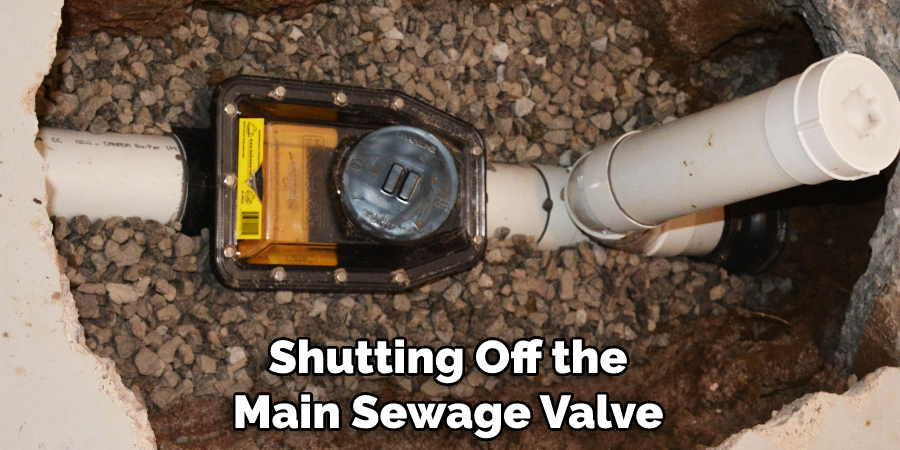
4. If the water has already leaked onto your floor, you will need to use a mop and bucket to soak up as much of the water as possible. This will help prevent any further damage to surrounding areas, such as subflooring or drywall.
5. Never attempt to repair the toilet yourself unless you are a qualified plumber or home maintenance specialist. If in doubt, it is always best to contact a professional in order to ensure the job is done correctly and safely.
6. Make sure to take a look at your tile floor for any signs of discoloration or other damage that may have been caused by the leak. It’s also important to check for mold or mildew growth in order to prevent any potential health risks.
7. Lastly, it is essential to remember that even if the leak appears to be minor, you should still seek professional advice as soon as possible. This is important because a leak can often cause extensive and expensive damage if left unchecked.
By following these safety measures before attempting any repairs, you can help ensure no further damage occurs and that the repair is done in a timely and efficient manner.
Keeping these steps in mind will also help you determine if your toilet is indeed leaking under the tile or not. If after taking these precautionary measures, you are still unable to find the source of the leak, it may be best to call in a professional for further assistance.
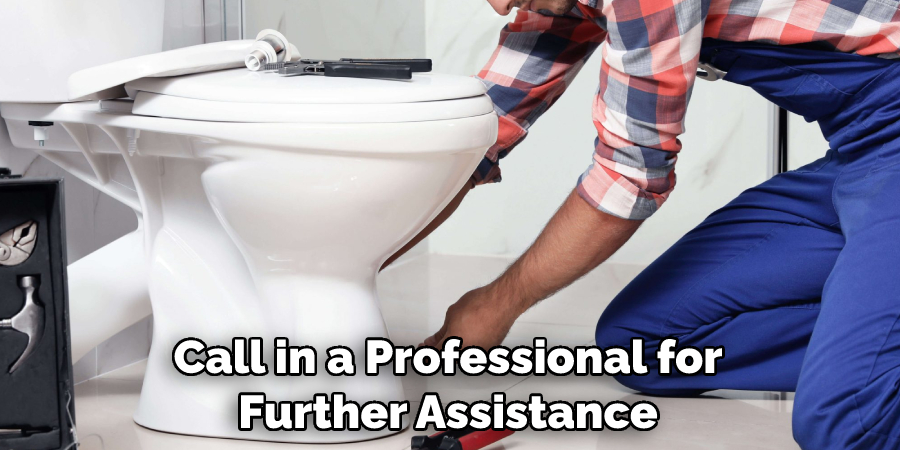
Conclusion
To sum up, if you suspect your toilet is leaking under the tile in your bathroom, there are several steps you can take to diagnose the issue. Check for visible signs of water damage, such as discolored grout, mold formation, or broken tiles.
Examine the walls and floor for any soft spots indicating leaks. Check around the toilet and on top of the tank because some leaks occur from loose bolts or holes in these areas. Don’t forget to check the wax ring, too, as a weak seal here may be causing water to leak.
Finally, use a moisture meter to check for high levels of moisture beneath the tile, which could be an indicator of an underlying problem. Leaking toilets should not be ignored since they can lead to structural damage over time.
Taking ownership and following consistent guidelines on how to tell if toilet is leaking under tile like these will help you maintain a safe and healthy home environment. And, hey–if you’re handy with carpentry and craft tools, why not try fixing it yourself? It’ll make for a great weekend project!

